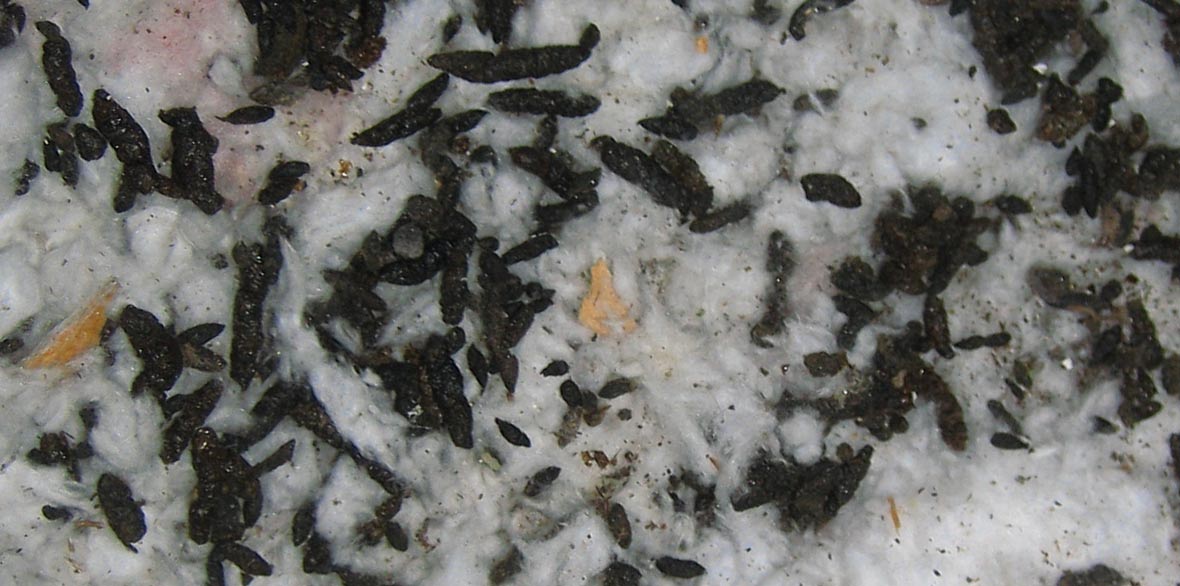- USA Wildlife Removal Education Guide - Is Bat Feces Dangerous to Touch or Breathe?
Is Bat Feces Dangerous to Touch or Breathe?

Many people who contract the disease often display no apparent ill effects but they can experience non-specific respiratory cough and flu-like symptoms such as fever, chest pain, dry cough, shortness of breath and joint and muscle pain. Histoplasmosis can also resemble tuberculosis and it can actually be fatal if it spreads to other organs. People who would be especially susceptible include those with weakened immune systems, are undergoing chemotherapy or are heavy smokers.
Even when fresh, bat droppings are in the form of tiny, desiccated pellets and as they accumulate beneath the roost they become ever drier, essentially taking the form of dust. This especially poses a risk for people who must work in such environments, such as chimney cleaners, HVAC installers and roofers. Such workers usually are wise enough to protect themselves with an air filtration mask.
If you think you must clean up an attic or old building where a colony of bats has roosted, take similar precautions. A mask that can filter particulate matter of one milli-micron diameter is recommended, and experts also suggest that you wear protective clothing. To keep the dust down you can spray a mist of water over the contaminated spots where you intend to work.
If a significant pile of guano has accumulated, as it probably has if the colony has been there for a while, it is best to have it professionally removed if you want to be rid of it. Any disturbance of the pile is going to result in a haze of the pernicious dust. Professionals are experienced with the problem and have equipment and protective gear that minimizes the dust and its hazards.
It is not only attics and other household roosting sites that hold the hazard. In fact, the fungus can grow in any area that has been contaminated with bat or bird droppings, with likely spots including poultry houses, caves, bird roosts and similar enclosed spaces – even garden soil. Outdoor areas usually pose no problem, but it’s still wise to keep the dust down.
In any case, if you disturb a pile of old, dry bat droppings, especially in a closed space, you are putting yourself at risk. Leave it to the pros.
If you need help, we service the entire USA! Click here for a wildlife removal specialist in your town!
Go back to the main Bat Removal page for more information about Is Bat Feces Dangerous to Touch or Breathe?. Is Bat Feces Dangerous to Touch or Breathe?

